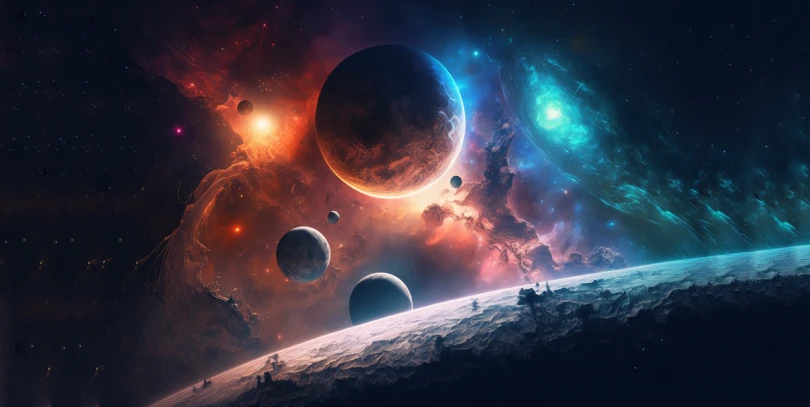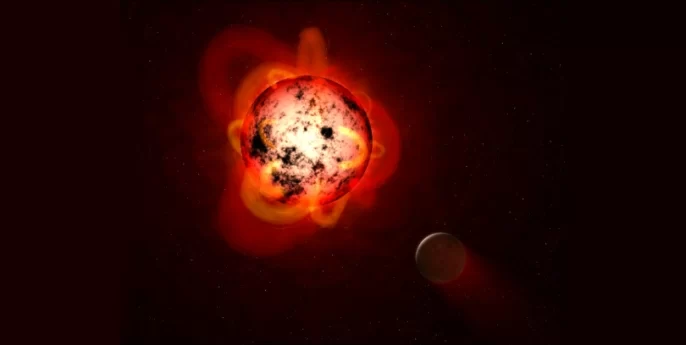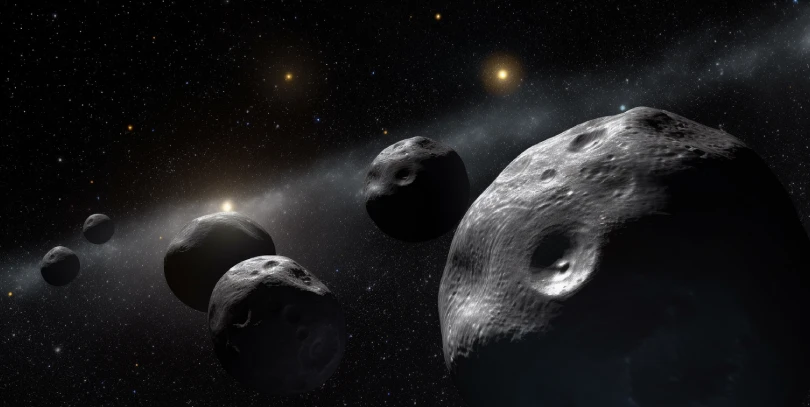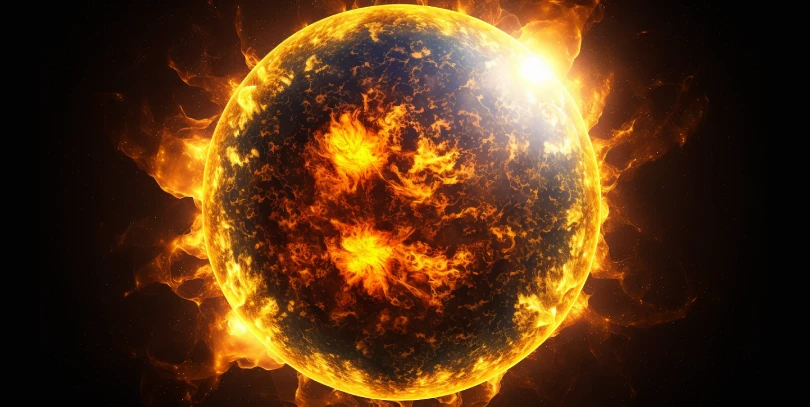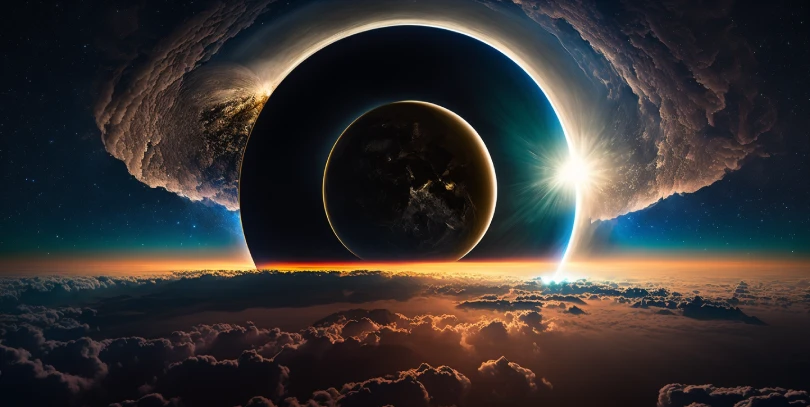From the mysterious dark matter to the blazing quasars, the universe is full of fascinating and strange phenomena. In this article, we explore 30 of the most incredible and mind-boggling phenomena in the universe. Learn about the mysterious dark energy, the powerful black holes, and more. Buckle up and get ready to explore the strangest things in the universe!
1. Dark Matter

Dark matter is the most abundant type of matter in the Universe, comprising about 27% of its total mass-energy content. It is responsible for the gravitational forces that govern the motions of galaxies and other cosmic structures. Despite its importance, dark matter is invisible and does not interact with light or any other form of electromagnetic radiation.
Galaxies are thought to be composed almost entirely of dark matter, and scientists infer its existence through the gravitational effects it exerts, even though they cannot see it directly.
2. Dark Energy

Dark energy is an enigmatic form of energy that is believed to be causing the universe’s accelerated expansion. Scientists think that it comprises approximately 68% of the total energy density of the cosmos, making it the dominant form of energy in the Universe. Although its exact nature remains unknown, researchers postulate that dark energy is a property of space itself, which exerts negative pressure and leads to the faster and faster expansion of the Universe over time.
3. Gamma-Ray Bursts
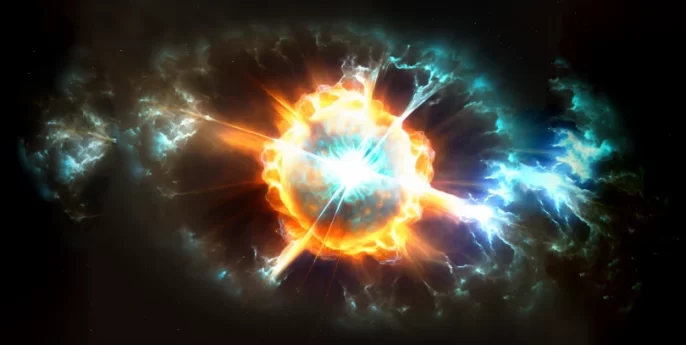
Gamma-Ray Bursts (GRBs) are immensely powerful explosions that occur in distant galaxies, releasing vast amounts of energy across the electromagnetic spectrum. They are considered the most luminous and energetic phenomena in the Universe and are believed to be associated with the collapse of massive stars and the formation of black holes.
Gamma-Ray Bursts are thought to be the source of some of the highest-energy cosmic rays and can last from milliseconds to several minutes. The afterglow from these explosions can persist for days or even weeks, providing a valuable tool for studying galaxies located at extreme distances.
4. Quasars
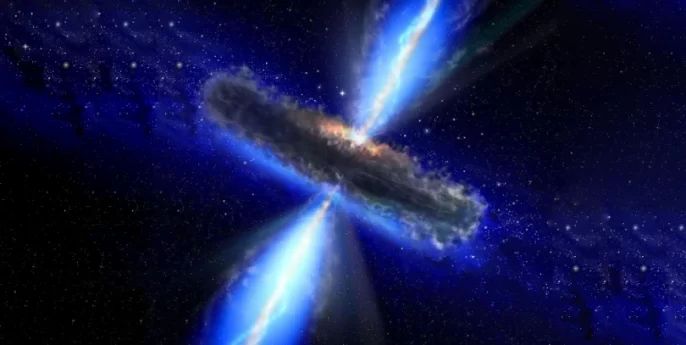
Quasars are some of the brightest and most distant objects in the universe. They are extremely luminous active galactic nuclei, powered by supermassive black holes at the center of distant galaxies. Quasars emit vast amounts of energy, more than a trillion times brighter than our Sun. They are incredibly distant and can be seen from billions of light years away. Quasars can help us learn more about the structure and evolution of the universe.
5. Supernova

A supernova is an incredibly powerful and luminous stellar event that occurs during a star’s final stages of life. During a supernova, a star rapidly increases in brightness, often becoming millions of times brighter than it was before. This extraordinary increase in brightness is caused by the sudden release of a large amount of energy from the star. The energy released during a supernova can be so intense that it can cause a shockwave of matter and radiation to spread outward in all directions. Supernovae are some of the most energetic events in the universe and can be seen from great distances.
6. Cosmic Microwave Background
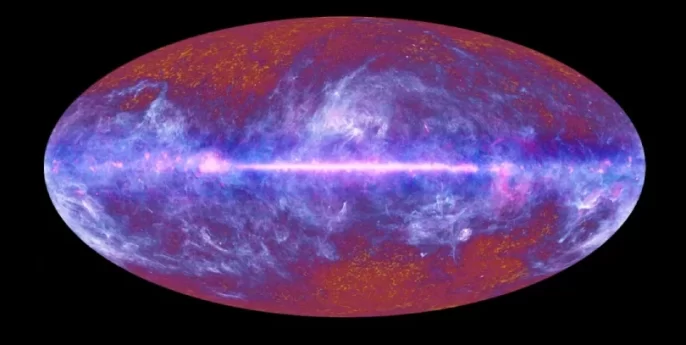
The Cosmic Microwave Background (CMB) is a faint thermal radiation that is believed to be the leftover energy from the Big Bang. It is thought to be the oldest light that exists in the universe, having been traveling through space for over 13.8 billion years.
In 1965, two American physicists named Arno Penzias and Robert Wilson discovered the Cosmic Microwave Background (CMB). They noticed a faint microwave signal coming from all directions without a known source. This signal is now understood to be the residual heat left over from the Big Bang. Scientists have used variations in the intensity of the CMB radiation to create a standard measurement tool, which helps them estimate the size of the observable universe with great accuracy.
7. Gravitational Lensing

Gravitational lensing is a phenomenon that occurs when the light from a distant source is bent by the gravity of an object, such as a massive galaxy, to produce multiple images. This effect is used by astronomers to study the structure and properties of the universe, and has led to the discovery of many new galaxies and other objects. The discovery of gravitational lensing has opened up a new window into the universe, allowing astronomers to study otherwise invisible objects and phenomena.
8. Black Holes

Black holes are mysterious space objects that have captivated the public’s imagination for decades. They are formed when matter, such as a star, collapses in on itself due to its own gravity. A black hole is so dense and its gravitational pull so strong that nothing, not even light, can escape it. Black holes can be found all over the universe, from small stellar-mass black holes to supermassive black holes at the centers of galaxies. They are one of the most powerful phenomena in the universe and can be detected through their powerful gravitational influence on surrounding matter.
9. Cosmic Strings
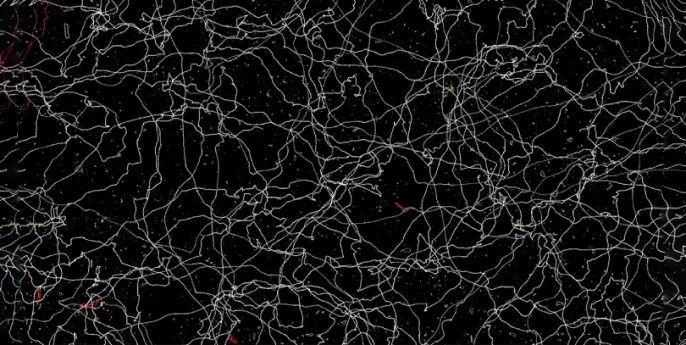
Cosmic strings are predicted by some theories of particle physics and are thought to be infinitely thin, yet extremely dense strands of energy, located in the space between galaxies. It is believed that cosmic strings have the ability to affect the structure of the universe, potentially creating distortions in space-time that can have an impact on the distribution of matter and energy.
It is also possible that cosmic strings may be responsible for a variety of astronomical phenomena, such as quasars, gravitational waves, and gamma ray bursts. While the exact nature of cosmic strings remains a mystery, research into the phenomenon continues in hopes of unlocking the secrets of the universe.
10. Cosmic Web
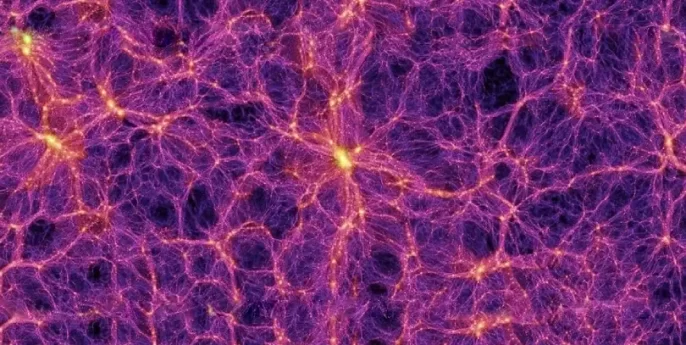
The Cosmic Web is a theoretical framework for understanding the structure of the universe. It is based on observations of galaxies and other large-scale structures, which suggest that the universe is composed of a network of interconnected filaments and voids. The Cosmic Web is thought to be made up of dark matter, which is a form of matter that does not interact with light, but acts as a gravitational force to hold galaxies together.
11. Cosmic Inflation
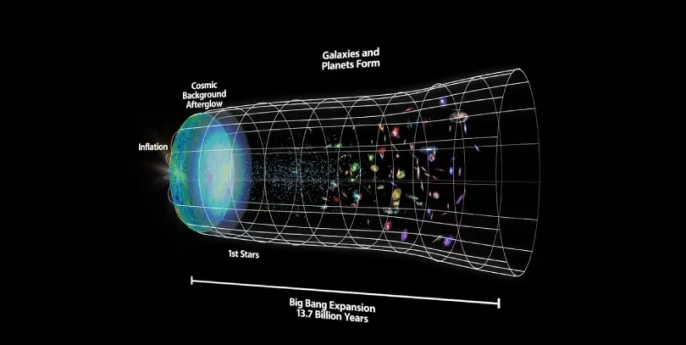
Cosmic inflation is a theory in physical cosmology that describes a period of rapid expansion of the universe during its first fraction of a second. During this expansion, the size of the universe increased by a factor of at least 10^78 in a fraction of a second. This rapid expansion is thought to be the cause of the homogeneity and isotropy of the present-day universe, as well as other large-scale structures. The theory was first proposed by Alan Guth in 1979 and has since been refined and developed by numerous scientists. Although there is no direct evidence for cosmic inflation, it is widely accepted as a valid scientific theory.
Cosmic inflation has been studied in various ways, including observational measurements of the cosmic microwave background radiation and large-scale structure observations. In the 1980s, many scientists predicted that a number of bubbles would form during the inflationary period and these have since been observed. The majority of evidence for cosmic inflation comes from gravitational waves which were first detected in 2016 by scientists studying gravitational waves using large telescopes such as Advanced LIGO and the Laser Interferometer Gravitational-Wave Observatory (LIGO). The theory is also supported by theoretical calculations on how quantum fluctuations of vacuum energy should scale.
12. Cosmic Rays
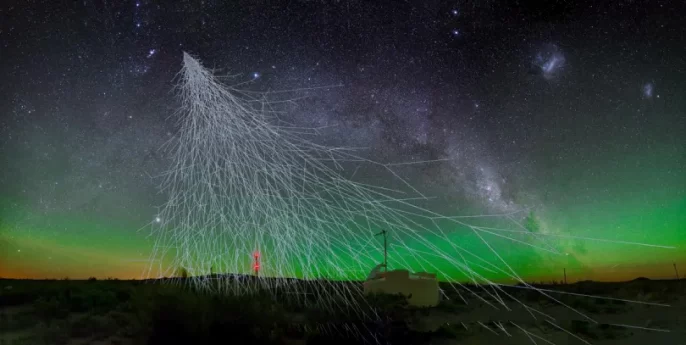
Cosmic rays are highly energetic particles that travel through space at near the speed of light. They originate from a variety of sources, including supernovae, active galactic nuclei, and the sun.
Cosmic rays are composed of protons, electrons, and other subatomic particles. When they interact with Earth’s atmosphere, they produce showers of secondary particles such as muons and neutrinos. Cosmic rays can cause damage to satellites, astronauts, and other sensitive electronics.
They can also be studied to gain insight into the structure of the universe and the origin of matter.
13. Antimatter
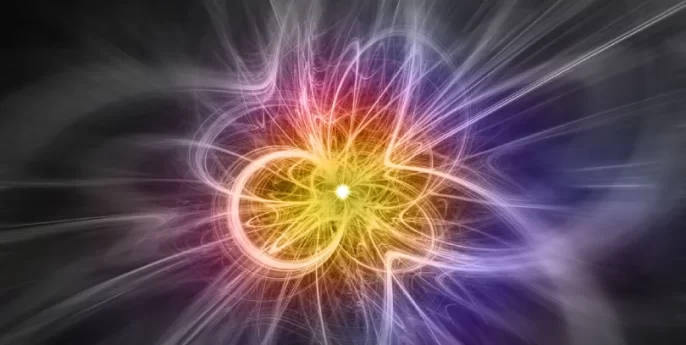
Antimatter is a form of matter composed of particles with the same mass as ordinary particles but with the opposite charge. Antimatter has the potential to revolutionize energy production and space travel, as it can release vast amounts of energy when it comes into contact with matter. Scientists are continuing to study antimatter, and its potential applications are still being explored.
14. Hawking Radiation
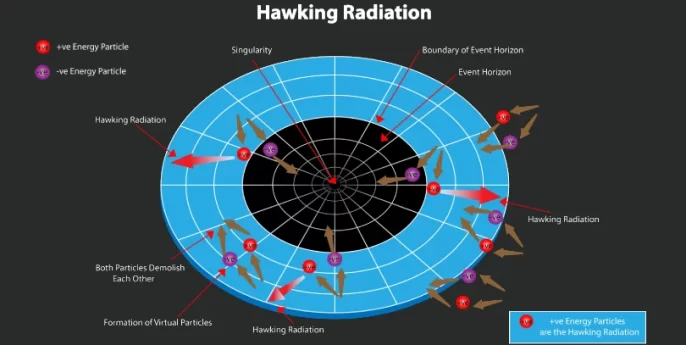
Hawking radiation is a type of thermal radiation emitted by black holes due to quantum effects near the event horizon. It is named after its discoverer, the renowned physicist Stephen Hawking. Stephen Hawking’s groundbreaking discovery of Hawking radiation, first proposed in 1974, has revolutionized the way physicists think about black holes.
This radiation is a result of virtual particles created near the event horizon of a black hole due to the extreme gravitational field present. These virtual particles can cross the event horizon and escape as real particles, resulting in a net loss of energy from the black hole that can be observed in the form of thermal radiation.
Hawking’s prediction was based on general relativity, specifically his equation for the radiation rate as a function of mass. Hawking radiation is emitted from black holes both in the form of particles and waves. The particles are called “electron-positron pairs” or “virtual photons”. These particles can be either directly emitted from the black hole, or through quantum mechanical effects near the event horizon by way of Hawking evaporation, which is when part of a system’s mass disappears with time due to Hawking radiation.
15. Magnetic Monopoles

Magnetic monopoles are hypothetical particles that have a single magnetic pole.
Magnetic monopoles are believed to be the key to understanding how electricity, magnetism and light interact. If discovered, they would provide a major breakthrough in our understanding of the universe. Despite decades of searching, however, no magnetic monopoles have been observed in nature yet. Scientists are still working to find evidence of their existence, using complex particle detectors and other sophisticated equipment.
16. Neutron Stars
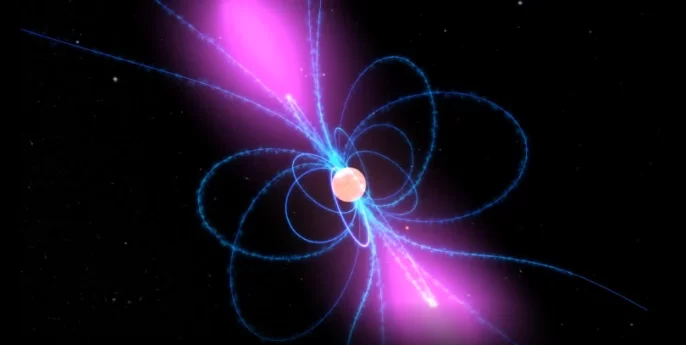
Neutron stars are incredibly dense objects that form when the core of a massive star collapses in on itself. These stars are typically around 10 kilometers in diameter and have a mass of 1.4–2.1 times that of our own Sun.
Neutron stars are composed almost entirely of neutrons and have extremely strong gravitational fields, making them some of the most extreme environments in the universe. They also spin rapidly, emitting beams of electromagnetic radiation like a lighthouse. These beams can be detected from Earth, allowing us to study these distant objects and learn more about the nature of the universe.
17. Cosmic Filaments
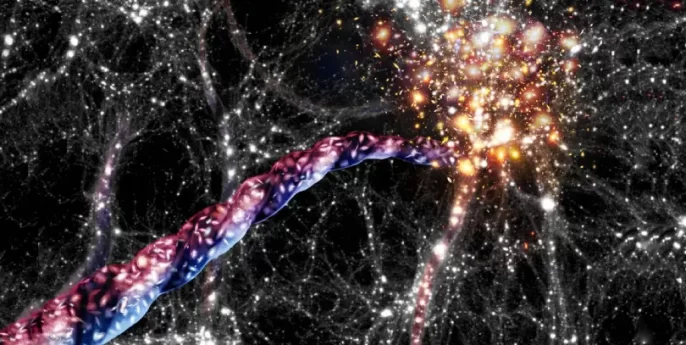
Cosmic filaments are immense structures composed of galaxies, gas, and dark matter that form the backbone of the universe. These vast structures can span hundreds of millions of light-years and contain enough material to make up as much as 40 percent of the universe’s total mass. They are important for understanding the evolution of galaxies, star formation, and other astrophysical processes.
Recent research has revealed that these filaments are composed of an intricate web of gas, dust, and dark matter, which helps explain why galaxies form along these structures. By studying cosmic filaments, astronomers can better understand the structure and evolution of the universe.
18. Spaghettification

Spaghettification, also known as the “noodle effect,” is a phenomenon in astrophysics in which an object, typically a star or black hole, is stretched out and compressed by the extreme gravitational forces of another body. This process occurs when a star or object is drawn towards a black hole or other highly dense body, resulting in a thinning of the object as it approaches the gravitational field of the body. As it continues to be pulled inward, the object begins to take on a string-like appearance, resembling spaghetti noodles, hence the name spaghettification.
This phenomenon has been observed in distant galaxies, including the Andromeda Galaxy, in which the thinning of a stream of light from a star has turned it into spaghetti-like strands. The spaghettification process occurs because as an object is drawn closer to an even denser body, its gravitational field becomes stronger, causing the object’s density to decrease. At some point, this change happens so rapidly that spacetime around the object begins to break down and tear at itself like taffy. As spacetime tears away from the body and continues outward, it stretches out and compresses ripples.
19. Cosmic Void
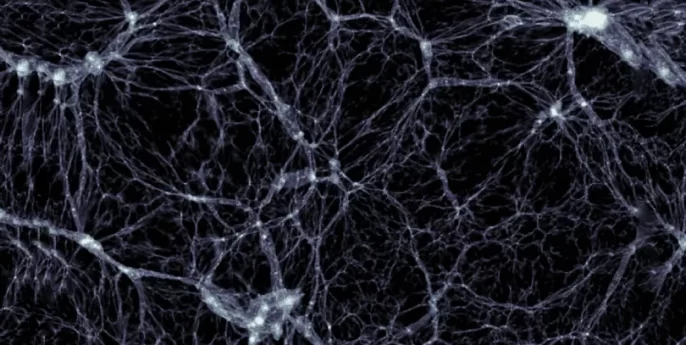
Cosmic voids are regions of the Universe that are believed to be almost entirely devoid of matter. They are believed to be the result of large-scale fluctuations in the early Universe, or regions where the gravitational potential is so great that not even light can escape. The voids are also known as:
- Hyper-spatial regions of space;
- Gravitational vacuum regions;
- Vacuum domains.
20. String Theory

String Theory is a branch of physics that seeks to explain the fundamental nature of matter and the universe. It posits that all particles and forces in the universe are made up of vibrating strings of energy, and that these strings can be described mathematically. String Theory has been proposed as a potential solution to the problem of unifying gravity with the other three fundamental forces, and as a way to explain the nature of dark matter and dark energy. The theory has yet to be proven, but it remains an active area of research in physics.
21. White Holes
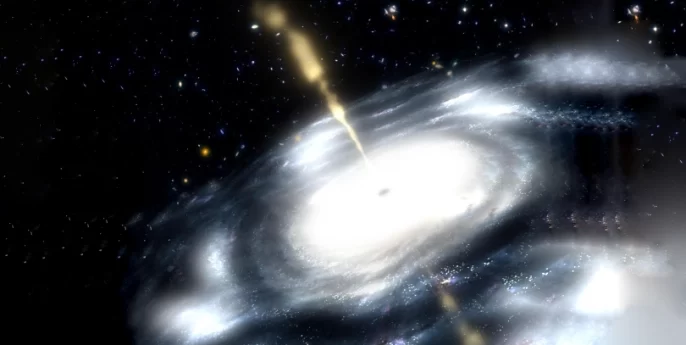
White holes are hypothetical regions in space-time that are the time reversal of black holes. They are postulated to have the same properties as black holes, such as a singularity at their center, but instead of absorbing matter, white holes eject matter outward. They have never been observed, and their existence is still debated among scientists. Some theories suggest that white holes could exist as the result of a collapse of a massive star or due to quantum effects in regions of high gravity. If they exist, they could potentially provide an alternative source of energy and could be used to explain some mysterious phenomena in space.
22. Magnetars
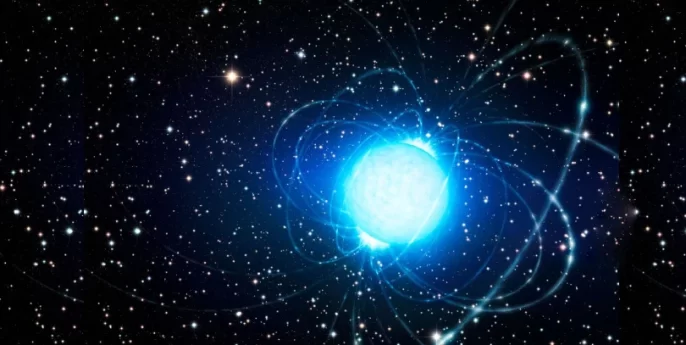
Magnetars are neutron stars that have extremely powerful magnetic fields, up to 10^15 (thousand trillion) times stronger than the Earth’s magnetic field.
These magnetars emit intense bursts of X-rays and gamma rays, as well as bursts of radio waves, which can be detected by telescopes. They are an important source of information about the physics of neutron stars, offering insights into the properties of matter under extreme conditions. They are believed to be the remnants of supernovae explosions.
Magnetars can also be used to study the evolution of stars and their magnetic fields, as well as the environment around them.
23. Radio Galaxies
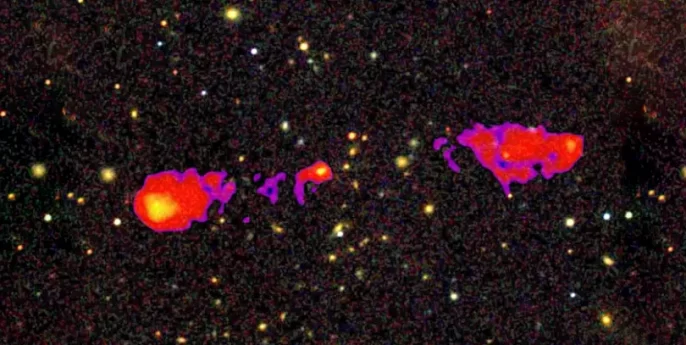
Radio galaxies are a type of galaxy that emits intense radio emissions from its core. They typically have two large lobes of radio emission extending on either side of the core, similar to a pair of wings, and often have an active galactic nucleus (AGN) at the center.
Radio galaxies are powered by supermassive black holes that are actively accreting material from their surrounding environment. This material is then accelerated to relativistic speeds and ejected as jets of particles, creating an energetic source of radiation. Radio galaxies are some of the most powerful objects in the Universe and can be observed across a wide range of wavelengths, from radio to X-rays.
24. The Fermi Paradox

The Fermi Paradox is a paradox first proposed by physicist Enrico Fermi in the 1950s. It states that given the estimated age of the universe and the vast distances between stars, it is highly likely that intelligent extraterrestrial life should have already visited Earth. However, no such evidence of alien life has been found, leaving scientists puzzled as to why this is so. The paradox raises interesting questions about the possibility of other intelligent life in the universe, and has generated much debate among scientists and philosophers alike.
25. Wormholes
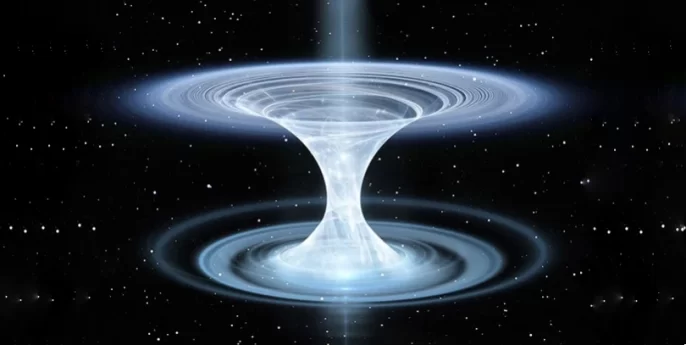
A wormhole is a hypothetical tunnel-like structure that connects two distant points in spacetime, allowing for passage between them faster than light traveling through normal space. Wormholes are predicted by the theory of general relativity and could theoretically allow for time travel and interstellar travel over vast distances. Although wormholes have yet to be proven to exist, they have been the subject of much scientific speculation and popular culture.
26. The Great Attractor
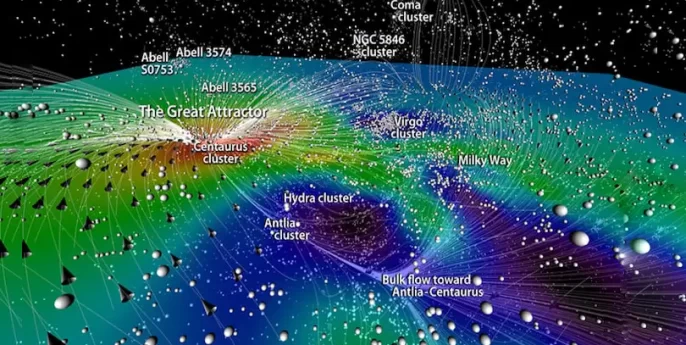
The Great Attractor is an incredibly powerful gravitational force located in the nearby universe, approximately 150 million light-years away from Earth. It is one of the most mysterious and powerful forces in the cosmos, influencing the motions of galaxies and clusters of galaxies over vast distances. Scientists believe that the Great Attractor is responsible for drawing in galaxies from across the universe, which is why it has been nicknamed the “cosmic vacuum cleaner”. The exact nature of this mysterious force remains unknown, but its effects on matter and energy are undeniable. With further study and exploration, scientists hope to better understand this massive force and its impact on our life.
27. Red Dwarfs
Red Dwarfs are the smallest and coolest type of star. They are also the most common, making up around 75% of all stars in the universe. Red Dwarfs are low-mass stars that range in size from about 0.08 to 0.6 solar masses. They have a relatively low luminosity, with temperatures ranging from 2,500 to 3,800 K (4,400 to 6,500 °F). Red Dwarfs are known for their long lifespans and stable brightness, with some lasting up to 10 trillion years. They are also dimmer than other stars, making them difficult to observe.
28. White Dwarfs
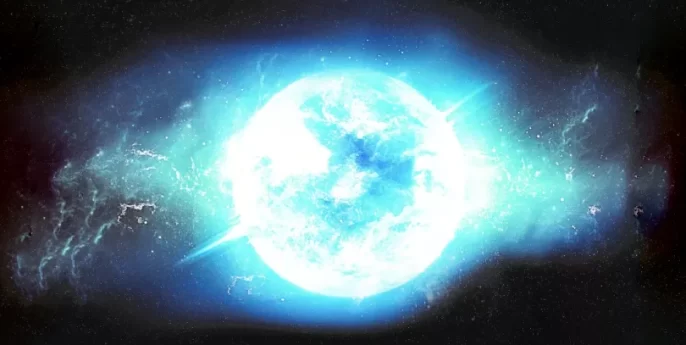
White dwarfs are stellar remnants that are left behind when a star has exhausted its nuclear fuel. These dense, compact objects are composed primarily of electron-degenerate matter, and typically have a mass between 0.08 and 1.4 solar masses and a radius of about 6000 km. White dwarfs are the endpoint of stellar evolution for most stars, and they are extremely long-lived, with lifespans in the billions or even trillions of years. They are also relatively faint, usually shining with an absolute magnitude of around 14 or 15. As such, they can be difficult to detect
29. Fast Radio Bursts
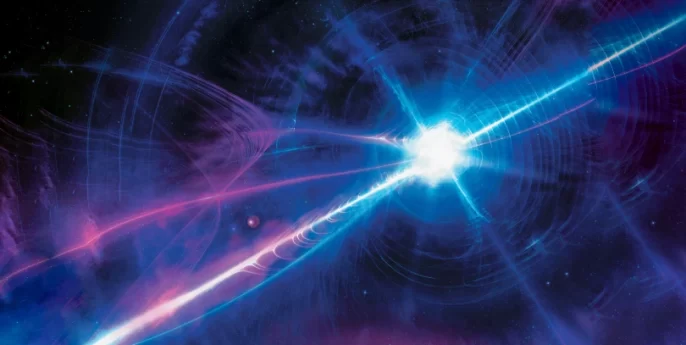
Fast Radio Bursts (FRBs) are mysterious, millisecond-long bursts of radio waves that originate from distant galaxies. They were first discovered in 2007, and since then astronomers have detected over 100 of these signals. FRBs are incredibly brief, lasting only a few milliseconds, but they are extremely energetic, emitting as much energy in one millisecond as the Sun does in 10,000 years. Scientists believe that FRBs may be caused by highly energetic cosmic events such as supernovae or mergers of neutron stars, but the exact source remains unknown.
30. Tidal Forces
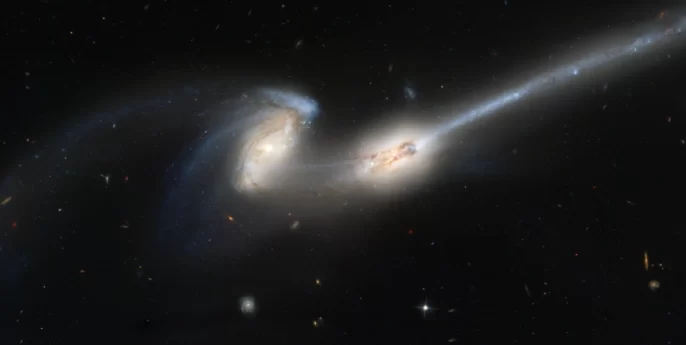
Tidal forces are the forces of attraction between two objects that arise due to the difference in their gravitational fields. These forces are very small in comparison to the forces of gravity between two objects, but they can have significant effects on their orbits and their movement around each other. Tidal forces play a key role in the formation and evolution of planets, moons, and stars, as well as other astronomical phenomena including tidal heating and tides on Earth.
Sources:
